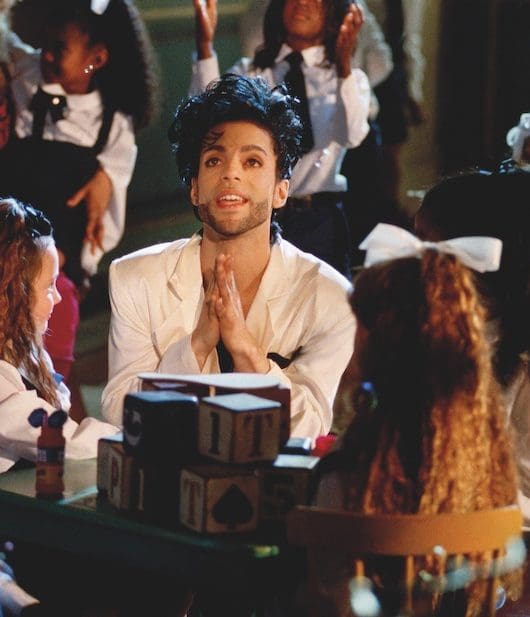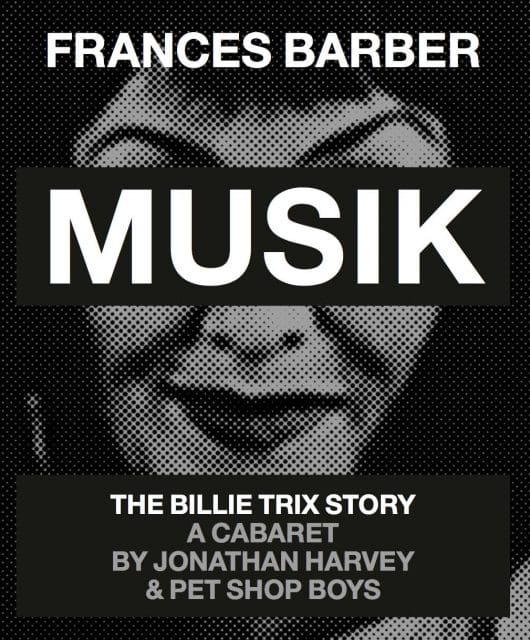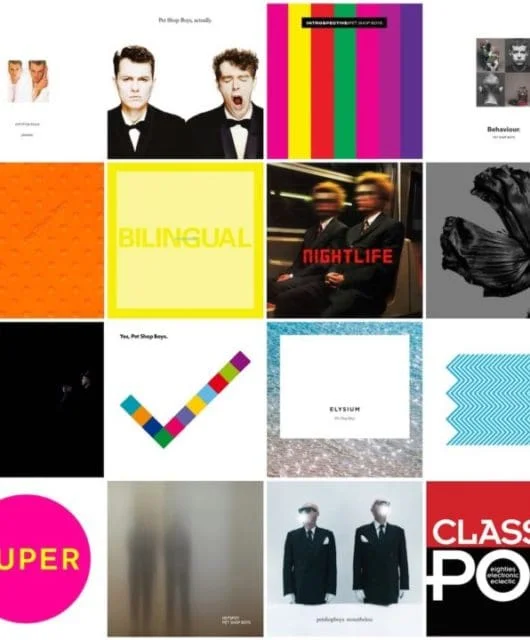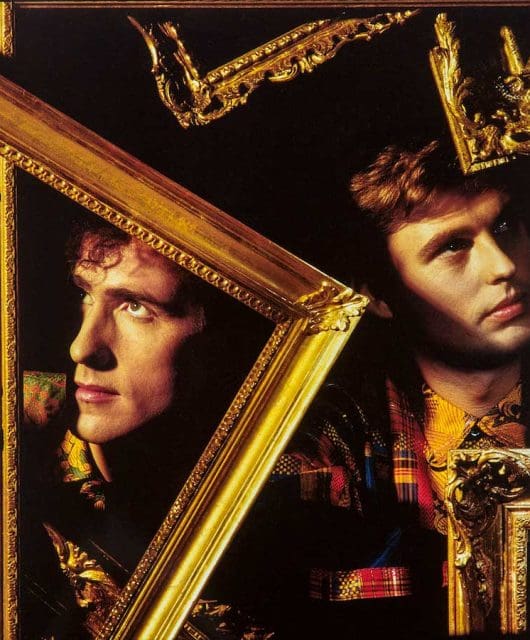Making Depeche Mode: Speak And Spell
By Matthew Lindsay | July 19, 2021
Depeche Mode: Speak And Spell announced the arrival of one of the most important synth-pop bands of the 1980s. We look back on its making…
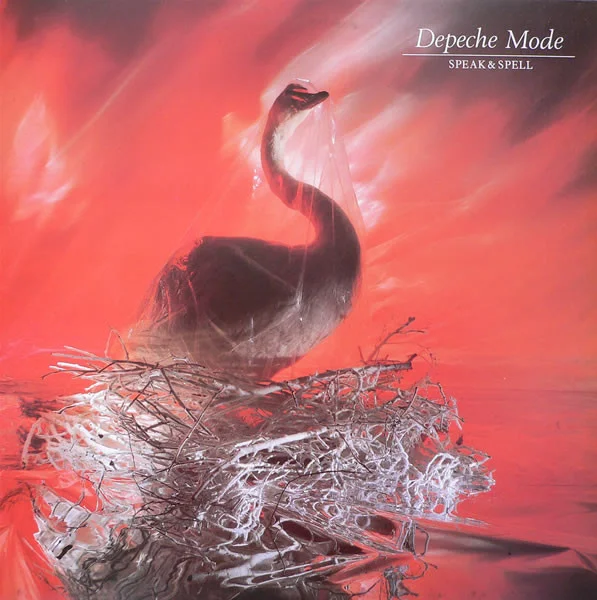
It would have been hard to be a young record buyer in 1981 and not get the feeling you were living through a golden age. Stylish stars gazed out from magazine shelves while sleek, polished pop filled the airwaves, beamed into the living room via Top Of The Pops. Duran Duran sashayed into the charts with Planet Earth, Adam Ant became a household name, and Spandau continued the success of last year’s debut, To Cut A Long Story Short.
Whatever retro comfort Shakin’ Stevens’ reheated rock’n’roll offered, this was synth-pop’s annus mirabilis. Myriad acts occupied the upper echelons of the charts with the electronic music Gary Numan had taken overground just two years previously. His futuristic star-shaped riposte to punk’s ‘no future’ had opened the floodgates.
It all came to a peak in 1981’s latter stages with a series of landmark long-players from Soft Cell, the revamped Human League, Japan, Heaven 17 and OMD, records that smuggled the weird and wonderful into mainstream pop.
Also hitting the shelves that October was Speak & Spell, Depeche Mode’s debut. To some, this band – perky, cherubic, with their album named after an electronic toy – were the runt of this litter. Depeche Mode: Speak And Spell displayed little of the depth of Non-Stop Erotic Cabaret’s red-light experience, nor any of Tin Drum’s exotic muso chops or far eastern promise.
The records that it shared the racks with seemed like its older, more sophisticated brethren. Penthouse And Pavement had Brit-funk swing and conceptual big ideas, while Architecture & Morality plunged into ambitious Eno-esque soundscapes with proggy mellotrons.
Play Depeche Mode: Speak And Spell next to Dare with its synthetic orchestral sheen and bang-up-to-date LinnDrum wallop, and it’s a bit skimpy… like electro-skiffle.
What it did have that the others lacked was a wide-eyed innocence, the joyful naivety that the best, purest pop often effervesces with. It proved irresistible. Propelled by the No.11 success of New Life, previewed that September by top tenner Just Can’t Get Enough and a flurry of press, Speak & Spell was a success before it was in the shops, with large advanced sales.
It sailed into the Top 10, staying in the charts for 32 weeks – quite an achievement for a new band on an independent label.
Sessions took place at Blackwing Studios, nestled in the Dickensian backstreets of South London’s Borough district. Daniel Miller had discovered the facility putting the finishing touches to his Silicon Teens album, finding owner/engineer Eric Radcliffe sympathetic to his DIY approach.
On Speak & Spell, Miller’s proviso was simple: capture the “atmosphere and vibe” of Depeche Mode’s live act and add a few “experimental twists”. Synth parts were laid down in the live room much in the manner of a traditional band with Gore’s lead on the Yamaha CS-5, Fletcher’s bass from the Moog Prodigy, and Clarke’s rhythm on the Kawai 100FS (he’d also purchased a Roland Jupiter 4 that summer).
However, Miller chose to add several vital ingredients, including an ARP 2600 and a sequencer. The semi-modular synth, invented in 1971, was versatile, being previously used in rock (The Who’s 1972 Relay), funk (Stevie Wonder), and the outer-limits of sci-fi cinema (R2D2’s voice on Star Wars).
Miller used the machine, purchased from Elton John’s tour ensemble in ’79, to create both percussive effects and Speak & Spell’s super-clean beat. Toiling away to get the right kick drum on the ARP, Miller remained in the studio for hours after everyone else had left, honing, tweaking, and tightening everything.
If this seemed like a chance to turn Silicon Teens theory into living, breathing practice, Miller was no Svengali; he was merely responding to the group’s own request to fashion a radio-friendly, chart-bound sound.
Reviews: Depeche Mode – Speak & Spell & A Broken Frame – 12″ Singles
Depeche Mode: Spirit review
Engineer John Fryer remembers the group being “very young, very shy and very naïve”, with Gahan hiding behind his mic stand. Clarke, however, felt right at home, “like a kid in a sweet shop”. He watched Miller at work, impressed by the sequencer’s ability to lock things into timed precision.
Despite the principal songwriter having slightly more studio experience, Speak & Spell was very much a group effort. Gore provided two songs and lead vocals on another, and the mix involved all the band’s hands on the mixing desk, turning things on and off, taking cues. Afterwards they’d pile into Eric Radcliffe’s motor, testing rough mixes on his car stereo.
If Clarke’s lyrics sometimes veered towards the opaque, then Speak & Spell’s music had a shimmering transparency. Blackwing was a modest 8-track facility, but Clarke saw that such constraints were a blessing.
Uncluttered and svelte, each constituent part zings through the mix with bell-like clarity, with everything in service to the song. And yet through this efficiency, Speak & Spell dazzles, achieving a beautiful pop concision.
It’s a monophonic synth funhouse, bleeping and whooshing like the Space Invader games they played, teeming with counterpoint. Arpeggios chatter melodically throughout as if the one-note at a time lines were expressing things the young ‘unfathomable’ Clarke couldn’t.
The finished result came housed in a sleeve by photographer Brian Griffin, with graphic design by Barney Bubbles.
The cover image, a silver swan in a silver nest, wrapped in a plastic bag surrounded by a swirling crimson backdrop, confounded many – but it makes perfect symbolic sense for a debut album by a synth-pop act, heralding the birth of something new, at once artificial and natural.
If they were reviled by certain corners of the press, that wasn’t reflected in Speak & Spell’s UK reviews. It received near-unanimous praise, garnering rave notices from both the pop bibles and the inky weeklies. Morley in the NME actually preferred it to Architecture And Morality in his comparative review.
Equally laudatory were Sounds, Melody Maker and Record Mirror. All highlighted Speak & Spell’s unforced, unpretentious charm, rare in an age of arty overreach when pop was taking itself very seriously.
Mike Stand of Smash Hits agreed (“synthesizers and bubblegum go together like tinned peaches and Carnation”), but he also noted hidden depths (“there’s more to the Mode than meets the eye”). For all its neon-lit immediacy, there is a hint of danger here, what the same magazine’s Steve Taylor had called a “tinge of moodiness” back in July.
Ultra-pop might bookend Speak & Spell, but when you dig deeper you’ll find its mid-section to be a junior echo of Dare’s dark centre, interrupted only by the disconcertingly chirpy What’s Your Name?
Read our article on the cover art of Depeche Mode
Read our article on Depeche Mode’s Violator
There’s Basildon’s new town thuggery, a vaguely gay subtext, voyeurism and WWII, all chafing at the pop surface, jutting out at arty angles, hinting at the tough stuff to come.
Like most early 1980s pop, Mode were forged in the shadow of punk. No matter how upbeat Speak & Spell was, Clarke’s early fondness for post-punk alienation – see The Cure’s Three Imaginary Boys – still looms sporadically.
There’s still a hangover from synth’s first wave too, those acts Phil Oakey aptly dubbed “the alienated synthesists”.
In the US, Rolling Stone’s David Fricke gave it a chillier reception, his rockist response coming with a thinly veiled subtext: this was not ‘real’ music. For Fricke, synth-pop was another of the UK’s “six-minute fads”, Depeche were “PG-rated” and, he claimed, “the revolution will not be synthesized”. It already had been.
More open-minded was the New York Times’ Robert Palmer, who marvelled at the LP’s immaculate construction.
Despite the occasional mood swings, Mk.1 Mode brought, as then-music scribe Neil Tennant wrote, “a new warmth to cold electronic pop”, thawing it with harmonies and hooks. On Speak & Spell, Depeche Mode – perhaps more than any other group – made synth music relatable.
Existing in their own New Town orbit, they were their audience, less hyper-stylised than major label young bucks Spandau or Duran, less icy and remote than sophisticates like Sylvian. OMD even told Smash Hits they’d given up writing pop songs… they were leaving it to Depeche Mode.
Writer Simon Spence claims Speak & Spell was as momentous a first outing as The Velvet Underground & Nico – a stretch, perhaps, but the album does hang together with a fluency that adds up to something more than its parts. It’s a perfect pop album that’s far from perfect.
As with many debuts, there’s a nagging sense that it would have been improved by a different track selection, that Dreaming Of Me and Ice Machine could easily replace certain tracks (the former was included in the US).
Read our definitive guide to Depeche Mode
Depeche Mode: Songs Of Faith & Devotion
It’s also hard to view Speak & Spell away from what happened next. When Clarke and Depeche Mode emerged from their November ’81 split, both parties seemed to eclipse this joint effort. Yazoo’s Upstairs At Eric’s thickened the superfunk synthetics, refined the pop sensibility and had bolder experiments.
Depeche Mode’s A Broken Frame displayed more compositional nuance, beefier electronics, and a more lucid lyrical viewpoint. Crucially, Gahan grew into a far more potent vocalist, less timid, emerging from behind that mic stand.
Depeche Mode: Speak And Spell – The Sound of 1981
Ultimately, Speak & Spell captures a band in the white heat of its first thrilling moment, freezing the frame on a fleeting line-up in one brilliant flash.
It’s a supremely adolescent record, the sound of innocence on the brink of experience, as excited as the Basildon boys who made it on their first cheap day return to London, faces lit up by the glow of arcade machines or the lights of a first trip to the discotheque.
Speak & Spell strikes a balance between the familiar and the shock of the new, that inter-zone where so much perfect pop exists.
Depeche Mode: Speak And Spell – The Songs
New Life
“Immaculate!” exclaimed Simon Bates on TOTP. New Life embodied the bright side of synth-pop at the movement’s golden moment. Numanoid electro-noir met plinky-plonk optimism; the electronics are redolent of Kraftwerk’s Airwaves while harmonies take it to a 60s teen-dream crescendo (The Beatles’ Twist And Shout).
Despite its debt to German pioneers, it’s an avowedly English synth record, as if The Tornados’ Telstar had been the blueprint for the future. Occupying the charts for 15 weeks, New Life peaked at No.11. This was electronic music’s rebirth, a leap from the bleak, industrial 1970s into a shiny, ultrapop tomorrow.
I Sometimes Wish I Was Dead
The title suggested a morbid adolescent comedown after New Life’s high, but the song bounced along merrily, aglow with choirboy harmonies. A different version given away with Flexipop magazine rises even higher, the beat dropping out halfway through leaving the Mode carolling and churchy synths.
With that ‘happy, clappy, nursery rhyme’ simplicity, it’s pure Vince Clarke. Whistling synths zip through it like OMD’s Enola Gay, but strip away the ‘new sounds all around’ and you’re left with a pretty folk-pop melody reminiscent of Clarke’s faves Simon & Garfunkel.
Puppets
From Living Doll to Roxy’s In Every Dream Home A Heartache to Kraftwerk’s Showroom Dummies, pop is full of mannequin fantasies. Sultry and sinister, Puppets is assembled from parts of all three… a taster of the darker ‘perv-pop’ they’d make after Clarke’s departure.
This time, unlike Master And Servant, Gahan is on top, operating this robotic-erotic machine, but wordsmith Clarke is pulling the strings from behind the synth. Puppets bursts with motifs and melodies.
Popping arpeggios flash back to the synth-pop building block Popcorn, while that elegant melody after the middle eight zooms forward to Pet Shop Boys.
Boys Say Go!
Football terrace chants in a wind tunnel usher in a macho equivalent of Yazoo’s super-funk struts. It’s a comic book view of ‘boys getting together’ two years after Bowie’s Boys Keep Swinging.
Part-Basildon Beano bovver boy, part homo-erotic bum-shaker, Boys Say Go! was, for Smash Hits, “oddly menacing, gnawing at your nerves”. A live favourite, it was kept in their repertoire right up to the Black Celebration tour.
Nodisco
Essentially Boys Say Go! part two, this is a chanty, futuristic floor-filler – more dystopia down the disco with that mechanical groove, a clinical beat, and robotic bass-lines while sparkling synths light up the dancefloor.
And like Boys Say Go!, NoDisco is another skeleton Moyet would flesh out on Yazoo. You can almost hear Don’t Go’s testifying vocals coming around the corner.
What’s Your Name?
Maybe Speak & Spell’s one duff track; was this a rebuttal of their pretty boy image, a satirical swipe at 80s club-land peacocks, or was it shy, unassuming Clarke taking potshots at aesthete Gahan singing his song? In fact, What’s Your Name? was aimed at the tabloids.
There’s a dose of campy, winking subversion to it, boys singing a girl group confection (early Composition of Sound gigs featured a Crystals’ Then He Kissed Me cover). But really it’s another cousin to Bowie’s Boys Keep Swinging, only paler and weedier, with pimples.
Photographic
Originally recorded as part of Some Bizzare’s Futurism compilation (where it was hailed as the highlight), Photographic restores the atmosphere.
Many prefer the earlier, dirtier version, but this polished remake does have nerve-shredding tension and release, plus a firework display of synths. Miller noted that the young Depeche “weren’t touched by the art school aesthetic”, but Photographic is tinged with it – the opening lyrics could be the mounting of a modern art installation.
The music tells the real story though, fusing electro-gloss with clanging disturbances, getting deep inside the lensman’s mind.
Tora! Tora! Tora!
From the pen of Martin Gore, taking its title from a Japanese military code meaning ‘complete surprise’ (it’s the title of the film dramatisation of the 1941 Pearl Harbour attack). Gore’s fondness for early League comes through, with Being Boiled-style pulses and deep, doomy synths. Predictive of A Broken Frame’s denser soundscapes, it’s bolstered by an almost tribal rhythm.
Gahan is mostly a ghostly presence here, reflecting, like that spooky theremin noise, the macabre lyrical imagery; war, death, nightmares, skeleton. The first glimpse into the Gothic imagination of Martin Gore that would later run riot all over Depeche Mode.
Big Muff
One of many Mode instrumentals – Nothing To Fear, etc – Big Muff’s huge, marauding synth parts more than make up for the lack of vocal. It was tagged by some as Eurodisco; others, such as Smash Hits, compared its future-funk to Stevie Wonder, himself an early adopter of Speak & Spell’s magic component, the ARP 2600. A live highlight, Big Muff stayed in their set after ’81.
Any Second Now (Voices)
A dreamy electro-ballad, penned by Clarke, sung by Gore, woven from the same synthetic gossamer as Kraftwerk’s Neon Lights (a different instrumental version appeared on Just Can’t Get Enough’s B-side).
On an album that often feels airtight, this beatless lullaby opens the sound up, drifting away with artificial marimbas (chimes that would resurface on Erasure’s Wild!).
At the centre of this web of delicate textures, glinting in the cinematic lyric, was Speak & Spell’s most heartfelt moment. Clarke’s compositions would wear their heart on their sleeve more and more, from Yazoo’s Only You to The Assembly’s Never Never to Erasure, aided by the often unguarded Andy Bell.
Gore’s tender vocal also foreshadows the off-kilter Mode ballads he’d write and perform, emotionally naked and sonically layered.
Just Can’t Get Enough
Speak & Spell’s final track, Just Can’t Get Enough, is in many ways Mode Mk.1’s zenith. On this No.8 smash, all vestiges of synth past are gone, replaced with pure electro-pop, raging with hormones and dance-floor ready (hear the crowd erupt during its intro at Chichester’s Off The Record gig). When Morley praised their “relentless friskiness”, he could have been describing this irrepressible ditty.
For Clarke, pop tunesmith par excellence, this was no aberration. But that poppiness, as fizzy as soda, was precisely what the remaining group would soon disavow. Even the 12-inch sleeve seems eager to move on, projecting them into their kinky, industrial future.
For some hard hearts, Just Can’t Get Enough has been dimmed by over-exposure like that other ‘81 synth-pop evergreen, Don’t You Want Me? As the 80s progressed, electronic pop became increasingly conventional; don’t blame Just Can’t Get Enough’s deceptively simple pleasures, though.
Around that infectious riff and vocal, there’s nuance, counterpoint, bubbly synth brass, and an exhilarating zoom in the breakdown, predating Freeez’s IOU by two years. It’s both of its time and timeless, as idealistic as She Loves You or I Want To Hold Your Hand, as giddy as the pangs of first love it has soundtracked across youth club disco floors over the years.
Like those early romances that burn so bright and brief, it’s the sound of a line-up that within two months after its release would cease to exist.
Check out Depeche Mode’s website
Read our 2019 interview with Gary Numan


